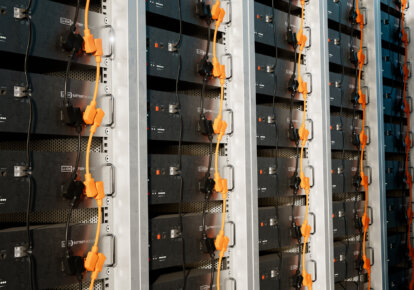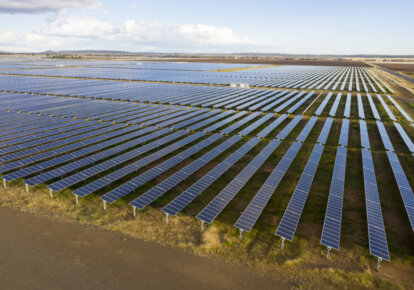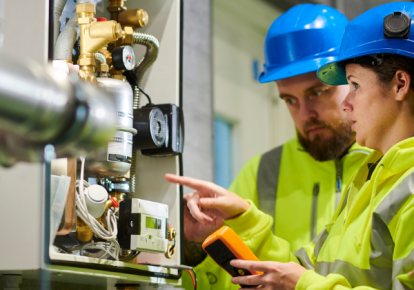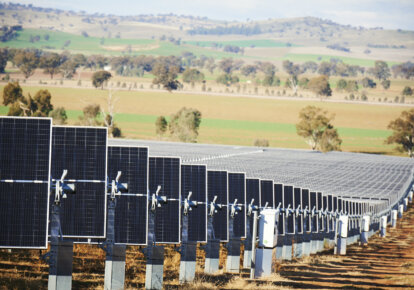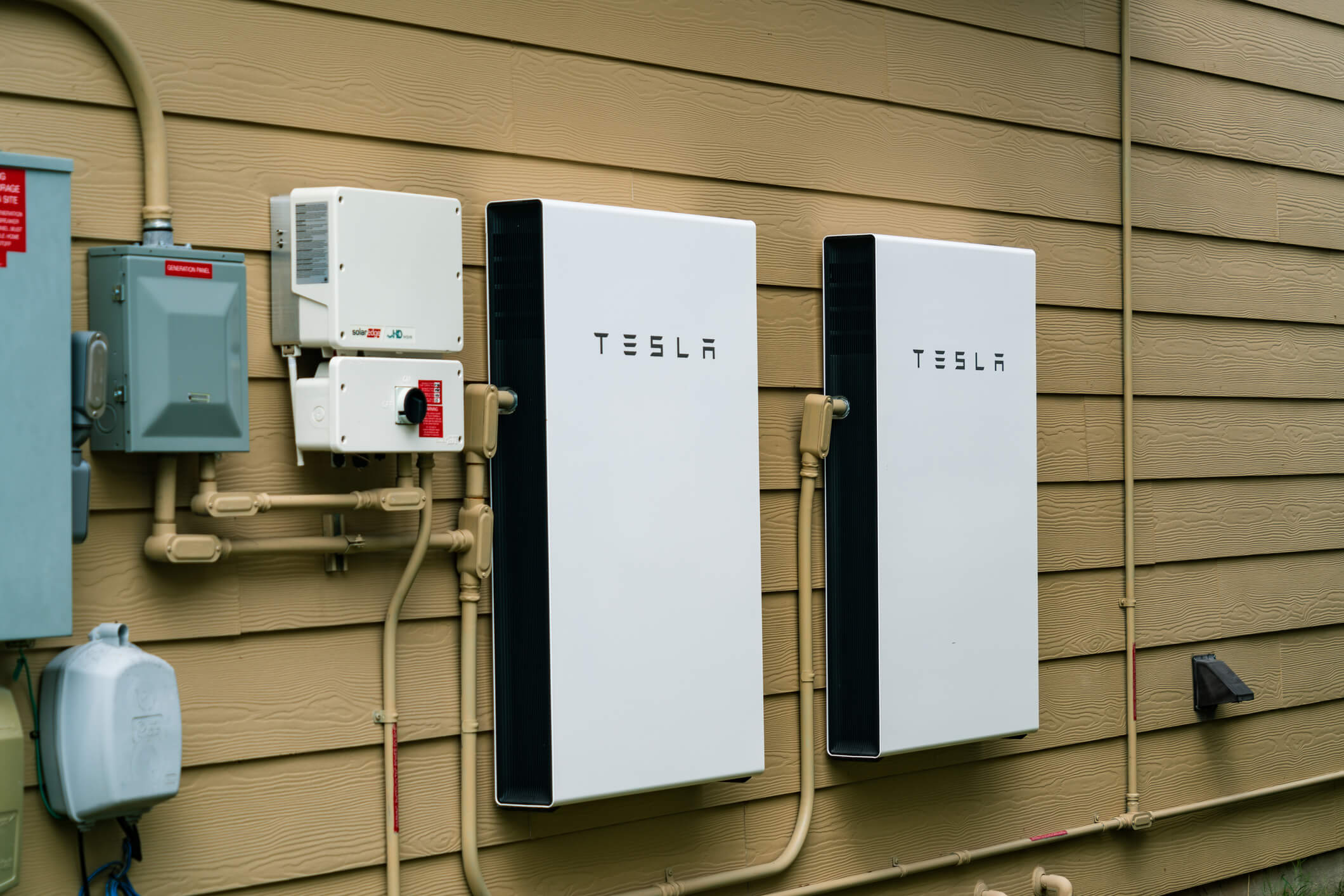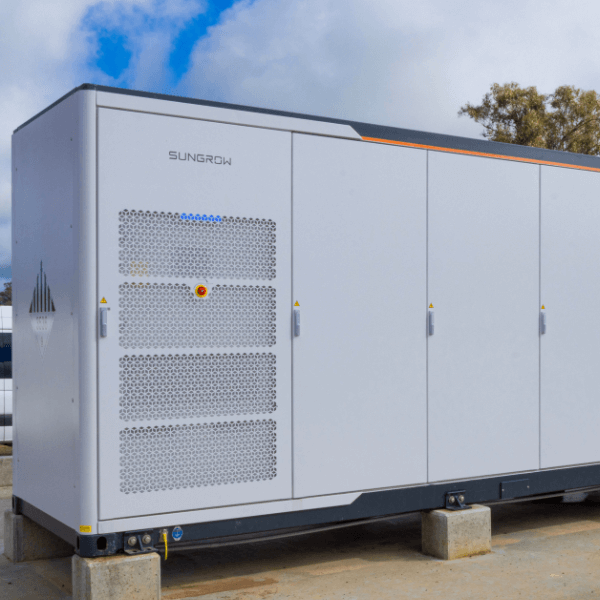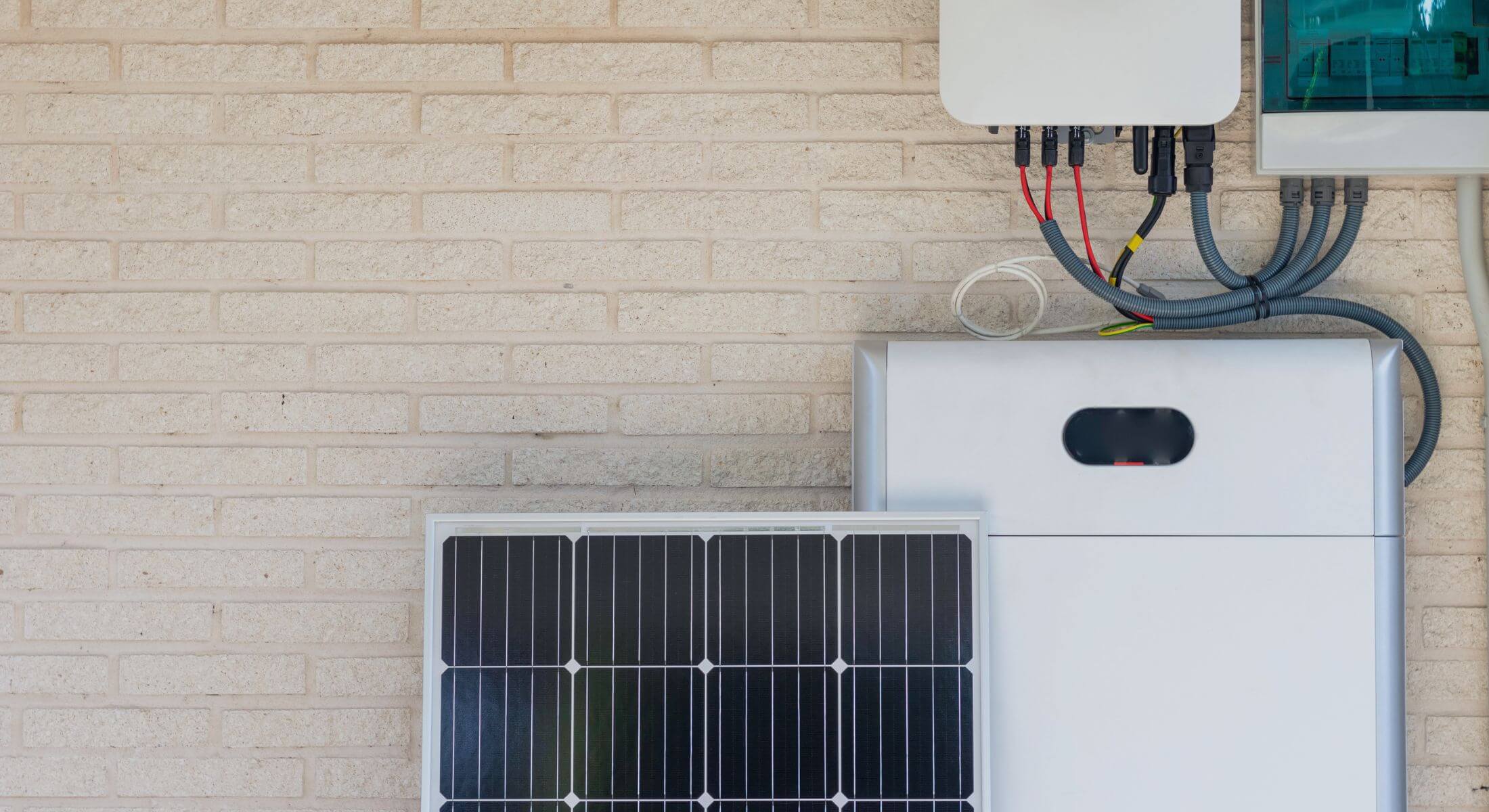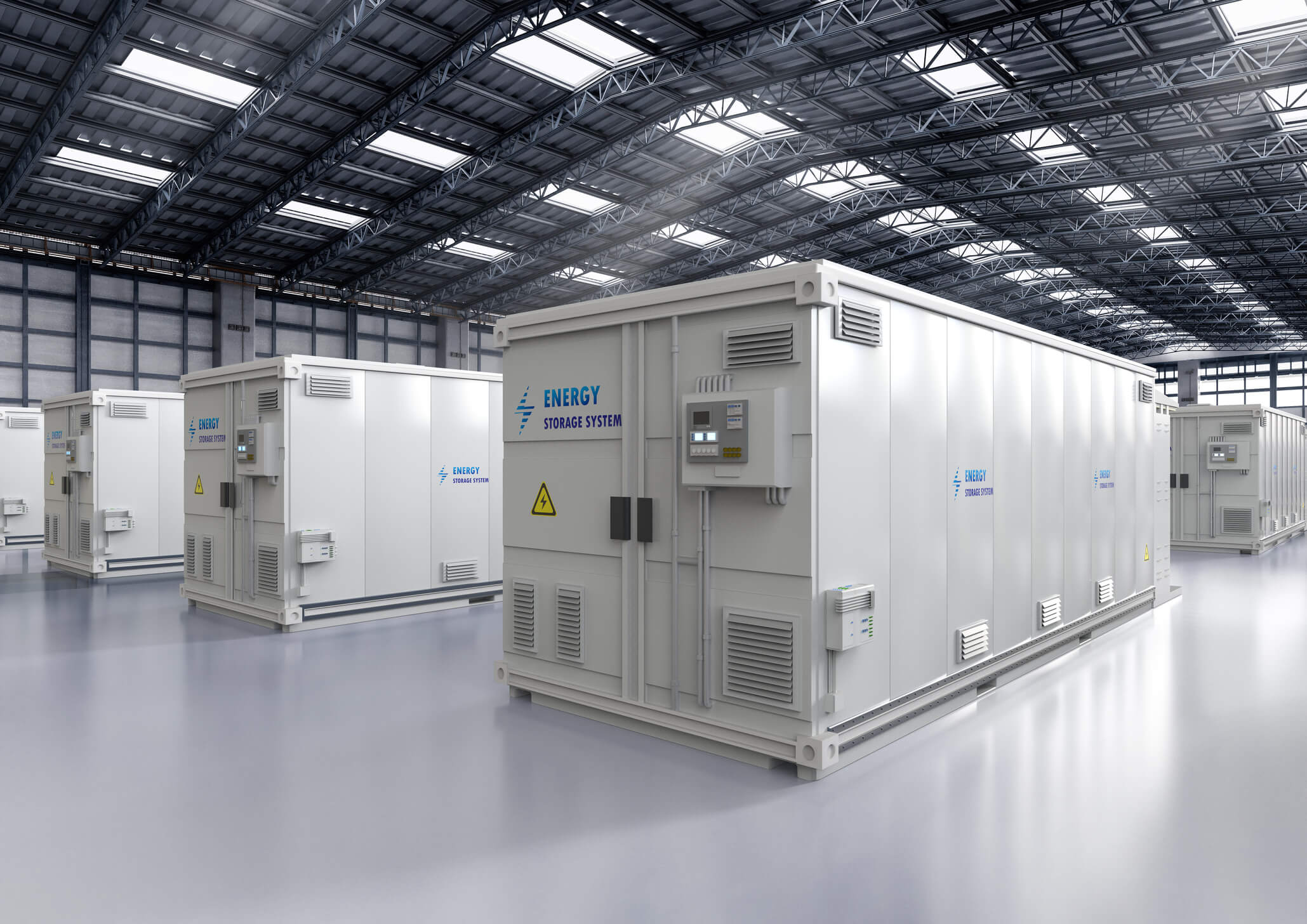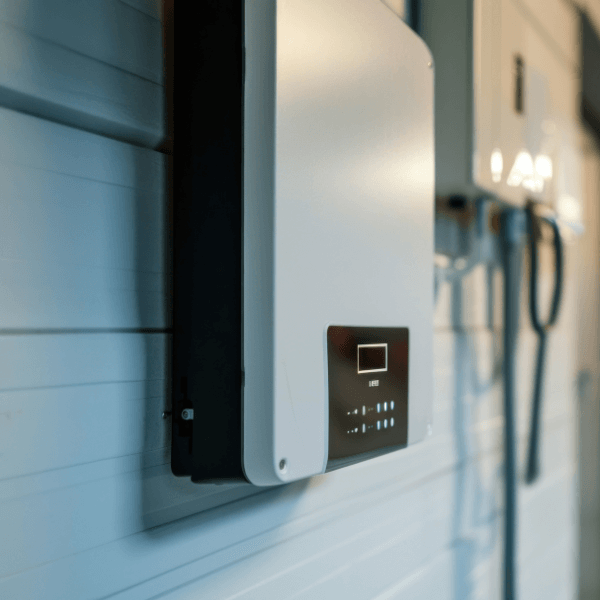Australia’s clean energy targets are accelerating the deployment of renewables across our homes, businesses and at grid scale. They’re already providing an abundance of clean, cheap energy for our nation – but variable generation can be an issue if the sun isn’t shining, and the wind isn’t blowing.
So, how can we maximise our existing renewable capacity and solve the issue of intermittent generation?
The solution is simple.
We need more Battery Energy Storage Systems (BESS) soaking up excess energy in the grid and in our homes.
Batteries can store excess renewable energy and discharge it when it’s needed, helping meet demand and stabilise the grid. Reliable, flexible battery storage is essential to turn variable generation into dependable power – no matter the weather, or the time of day.
The role of battery storage in a renewable grid
Battery energy storage systems are key to integrating renewable energy, both at home and at scale.
Key battery functions include:
- Load shifting: Batteries can be charged when renewable generation is abundant and wholesale prices are low, then discharged during high‑demand periods to smooth out price spikes and reduce wholesale exposure in peak periods.
- Backup supply: Batteries can be configured to provide rapid-response power during outages to protect critical services without relying on fossil-fuelled generation.
- Grid stability services: Batteries can be used for mechanisms such as frequency control (FCAS) which helps keep the power system stable as thermal generators retire.
- Firming renewables: Pairing batteries with wind and solar produces a steadier, more predictable power output, making renewables more reliable for grid operators and consumers alike.
- Replacing fossil fuels: Batteries are reducing the need for expensive fossil-fuel peaking plants and helping to create a cleaner, more affordable energy system for Australia.
How battery storage is being used in Australia
Home battery installations and grid-scale battery projects are increasing rapidly across Australia, and are already delivering value at scale:
- Grid-scale batteries: Large installations provide market services and capacity at strategic network points, helping stabilise supply and reduce price volatility across the National Electricity Market (NEM).
- Commercial and industrial BESS: Businesses can install behind‑the‑meter systems to manage costs, reduce peak demand charges and secure backup power in the event of disruptions or blackouts. Flow Power’s BESS solutions for commercial customers integrate with existing solar and control systems to maximise savings and energy resilience.
- Community projects: Schools, council buildings and regional hubs pair solar with batteries to lower energy costs and boost local reliability.
- Virtual Power Plants (VPPs): Networks of distributed batteries and solar systems can be coordinated to act like a single power plant, supporting the grid and helping boost returns on battery investments.
How does behind-the-meter battery storage help businesses?
Behind‑the‑meter battery storage can be installed on-site to store energy for businesses to use when they need it. This can be paired with existing solar, new solar or as a standalone system.
For manufacturers, farmers, cold storage, winemakers and other energy-intensive businesses, batteries can offer the following benefits:
- Peak demand management: Reduce or avoid costly demand charges by discharging batteries during peak usage windows.
- Cost control: Charge when prices are low and discharge when they’re high to drive down energy bills.
- Operational resilience: Keep refrigeration, production lines and critical systems running through outages if configured for backup power.
- Sustainability: Use stored renewable energy to cut emissions and support corporate sustainability targets – a competitive advantage with customers and throughout supply chains.
- Market participation: Battery systems can participate in demand response, and services like FCAS and RERT, dispatching into wholesale markets, and offering potential to unlock additional revenue streams for businesses.
Read more information about batteries for businesses
What’s next for battery storage in Australia?
Batteries are already booming in Australia. According to the Clean Energy Council’s latest Rooftop Solar & Storage Report, a record breaking 85,000 battery units were sold in the first half of 2025 – a 191% increase in sales for the same period last year. That number is only set to continue climbing.
So, what’s next in the battery pipeline for Australia?
- Government policy and incentives: Government programs and rebates are accelerating uptake and making projects more financially viable – you can learn more about the recently introduced Cheaper Home Batteries scheme here.
- More grid-scale batteries: As larger storage projects come online, the NEM will gain flexibility, helping smooth price volatility and supporting the integration of more renewables.
- Diverse storage durations: Short-duration batteries provide fast response, while a mix of longer-duration solutions will be needed to cover days or weeks of low renewable output.
- Smarter control systems: Improved software and data will let operators coordinate thousands of distributed batteries and consumer energy resources to deliver grid services at scale.
- Commercial opportunity: Homes and businesses adopting storage today can lock in savings, improve energy resilience and see cost savings grow year on year.
Frequently asked questions
- How does battery storage work with solar energy?
Batteries store excess solar generation during the day and can discharge it when solar output falls or grid prices rise. This maximises value from your solar system, ensuring all the energy generated can be used, and reducing export during times the grid doesn’t need additional solar energy.
- What are the benefits of batteries for commercial energy users?
Batteries can reduce peak demand charges, provide backup power, increase cost control, and offer opportunities to participate in market services, all while supporting sustainability goals.
- How long can battery storage provide backup power?
Backup duration depends on battery size and load, and how your system is configured. Systems can be sized to support critical loads for the hours needed to ride out outages or until backup generation is available.
Charge ahead with a battery
Battery energy storage systems and grid-scale batteries are essential enablers of Australia’s renewable future. They turn variability into opportunity – lowering costs, improving resilience and accelerating the transition away from fossil fuels.
If you’re a business or energy manager looking to cut costs and boost resilience while supporting the renewable transition, Flow Power can help tailor the right storage solution for your site. Contact our friendly team to find out more.


